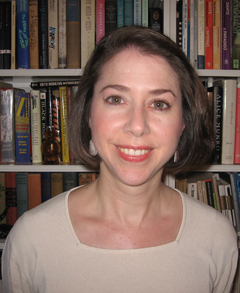 Welcome to Meredith Mundy, the Editorial Director at Abrams Appleseed. With a career spanning over two decades, Meredith’s keen eye for quality has helped discover and nurture many talented authors and illustrators. Her work on everything from an alphabet book showcasing Persian foods to a picture book debut (with flaps to lift!) about a very picky panda shows her dedication to uncovering hidden gems and bringing them to a wider audience
Welcome to Meredith Mundy, the Editorial Director at Abrams Appleseed. With a career spanning over two decades, Meredith’s keen eye for quality has helped discover and nurture many talented authors and illustrators. Her work on everything from an alphabet book showcasing Persian foods to a picture book debut (with flaps to lift!) about a very picky panda shows her dedication to uncovering hidden gems and bringing them to a wider audience
Meredith’s dedication goes beyond her role as an editor, as she is known to champion authors with unique vision and talent. Her triumph in giving the green light to projects that are unconventional yet promising showcases her leadership in the field.
To give you a glimpse into Meredith’s personality and passions, here are 7 Fun Facts:
- Favorite Picture Book Characters from Childhood: Sam, from Sam, Bangs & Moonshine by Evaline Ness, and Lyle from Lyle, Lyle Crocodile by Bernard Waber
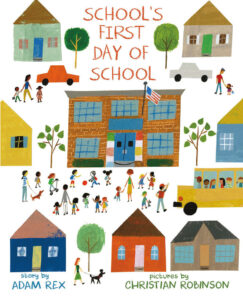 Current Picture Book Favorites (not from Abrams): School’s First Day of School by Adam Rex and Christian Robinson, Love in the Library by Maggie Tokuda-Hall and Yas Imamura, A Sick Day for Amos McGee by Philip C. Stead and Erin E. Stead
Current Picture Book Favorites (not from Abrams): School’s First Day of School by Adam Rex and Christian Robinson, Love in the Library by Maggie Tokuda-Hall and Yas Imamura, A Sick Day for Amos McGee by Philip C. Stead and Erin E. Stead- Best Moment in Editing: Every time I’ve helped an author find the perfect title (so much harder than it looks!)
- Favorite Picture Book Genre: Anything with humor and heart—fiction or nonfiction
- Motto for Selecting Manuscripts: Is it special enough?
- Go-To Bookstore: McNally Jackson Books at South Street Seaport (excellent children’s section)
- Culinary Talent: I make a mean brunch: artichoke & red pepper quiche + my mom’s Morning Glory Muffin recipe
What a list, right?
Now, without further ado, let’s dive into the interview and uncover more about Meredith and her work in the kidlit industry!
RVC: When did you realize editing was your pathway forward?
MM: My brilliant 6th grade teacher, Mrs. Meyers, allowed each of her students to pick out someone in the community to shadow for an entire day. Some kids shadowed veterinarians, firefighters, train conductors, but I wanted to “meet the person who makes the books,” so she connected me with an editor at a local publisher, and I was hooked! He was so passionate about his work, and the fact that he got to read for much of the day sealed the deal.
RVC: When you were getting your BA in Comparative Literature with a minor in Studio Art at Smith College, what was the intended career outcome?
MM: As improbable as it sounds, I held onto my dream of being “the person who makes the books” from 6th grade all the way through college, serving as a peer writing tutor and library assistant as part of my work-study arrangement, and taking two years of bookmaking with the intensely talented woodcut artist and sculptor Elliot Offner. In that class we were required to write, illustrate, typeset (lead letter by delicate lead letter, sometimes using tweezers, especially for the skinny lowercase “i”), print, bind, and sell a small print run of books. What an experience it was to create a book from beginning to end like that! I always sort of assumed I would be an editor of adult books, but when I did an informational interview with a Smith alum who adored her job as a children’s book editor and knew of an editorial assistant position, I jumped at the chance, and I haven’t looked back.
RVC: I’ve got to ask. How was your junior year abroad at the Sorbonne?
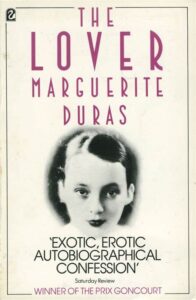 MM: Fantastique! (Or, as my French pen pal would have written back in the day: “Super-mega-top!”) There is nothing more humbling or more eye-opening than living as a foreigner in a foreign land. In my program, we were not allowed to speak English, so our language skills improved quickly out of sheer survival necessity. It was intimidating to take classes in French, but I loved the novels we read, especially L’amant (The Lover) by Marguerite Duras and Que Ma Joie Demeure (That My Joy Remain) by Jean Giono. Amazing books.
MM: Fantastique! (Or, as my French pen pal would have written back in the day: “Super-mega-top!”) There is nothing more humbling or more eye-opening than living as a foreigner in a foreign land. In my program, we were not allowed to speak English, so our language skills improved quickly out of sheer survival necessity. It was intimidating to take classes in French, but I loved the novels we read, especially L’amant (The Lover) by Marguerite Duras and Que Ma Joie Demeure (That My Joy Remain) by Jean Giono. Amazing books.
RVC: You’ve worked at a lot of big publishers, but you’ve been with Abrams for about six years. Why is that a great fit?
MM: I’ve loved every publishing job I’ve had and am so grateful for the incredible mentors who taught me how to be an editor while on the job. Abrams is a great fit because at this stage in my career what I value most is the support of a brilliant team and a lot of creative freedom. Our publisher and associate publisher truly value and reward editors’ passions and instincts, which is a tremendous gift.
RVC: What’s the most important thing for people to know or understand about Appleseed?
MM: We try to never underestimate the capacity of a young reader and want all kids to be able to see themselves in our books.
RVC: What’s the philosophy behind Appleseed books? How do you ensure a wide readership?
MM: From its inception, Appleseed has been about pairing the comfort of familiar objects or situations with a twist on the familiar—something unexpected. When acquiring new projects, we look for aspects that make a book as universal as possible, but we’re also thrilled by book submissions that appear at first to be somewhat narrow in scope but are just too delightful or special to resist and in fact could end up reaching a wide readership.
RVC: What’s the most difficult aspect of your work?
MM: Dealing with the financial challenges of making four-color books. There hasn’t been a book yet that I haven’t been able to make due to high costs, but there is a ton of time-consuming, behind-the-scenes trial and error effort involved in getting a P&L (profit and loss sheet) for a picture book or board book to balance before an offer can even be made to an author or illustrator.
RVC: What is your approach to editing a picture book manuscript? How do you work with authors to maintain their vision while enhancing the story?
MM: As much as possible, I try to take the “I” out of the equation. It doesn’t matter what “I” think or want—what matters is shaping the best possible version of an author’s manuscript for the benefit of their readers. So, I ask a LOT of questions in my editorial notes, which gives authors the opportunity to solve problems in whatever way feels right to them. Nine times out of ten, a solution an author comes back with surprises and delights me and is better than anything I would have thought to suggest.
RVC: In your experience, what are some common mistakes made by authors writing picture books, and how can they avoid them?
MM: 90% of the time, we reject a submission because it’s just not special or original enough. Absolutely everyone thinks they can write a book for children. And that’s true! But can everyone write a children’s book that adds something truly new and needed to what’s already out there? That’s a much bigger challenge.
RVC: What’s the most memorable piece of advice you’ve given to a picture book author that made a significant difference in their work?
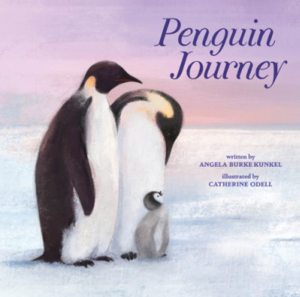 MM: A few years ago I received a young rhyming picture book submission about penguins that was well-written and funny but too slight for a hardcover. I rejected it but then couldn’t stop thinking about it—the writing stuck with me. I emailed the agent back and asked if the author might consider really delving into the subject and making the book nonfiction. The author revised expertly, writing a lyrical (still-rhyming) nonfiction text with a terrific author’s note about the incredible hardships endured by emperor penguins as they raise their chicks, and in its new form, I was able to acquire it! It’s Penguin Journey, written by Angela Burke Kunkel and illustrated by Catherine Odell.
MM: A few years ago I received a young rhyming picture book submission about penguins that was well-written and funny but too slight for a hardcover. I rejected it but then couldn’t stop thinking about it—the writing stuck with me. I emailed the agent back and asked if the author might consider really delving into the subject and making the book nonfiction. The author revised expertly, writing a lyrical (still-rhyming) nonfiction text with a terrific author’s note about the incredible hardships endured by emperor penguins as they raise their chicks, and in its new form, I was able to acquire it! It’s Penguin Journey, written by Angela Burke Kunkel and illustrated by Catherine Odell.
RVC: I love that story…almost as much as I love penguins (which is a LOT!). Now, please share insights on current trends in picture books, and where you think the industry is headed.
MM: Picture book editors across the industry are striving toward greater inclusivity and these efforts will continue to inform editorial decisions. We want our readers and their families to see themselves in the characters and settings and situations pictured in our books. With all the book-banning threats cropping up across the U.S., many publishers are defiantly publishing for ALL readers who need to be seen and validated.
RVC: In previous interviews, you’ve mentioned the importance of finding the right “comp” titles. How has this approach evolved over the years, and how does it inform your decision-making process?
MM: Comparison titles continue to be a very important part of the acquisitions process, allowing our Sales, Marketing, and Publicity teams to see where a prospective book might fit in the marketplace and on our list. If we can find already-published books that prove a particular topic or genre is wanted and needed by book-buyers, then it’s much easier for the acquisitions team to imagine a brand-new project forging a successful path. Even a book proposal that appears to be a true one-of-a-kind can be creatively compared to something else on the market. That’s one way comp title lists have evolved—we’re not necessarily looking for one-to-one comparisons, but rather glimpses into what a book’s potential could be compared to other books that have found a welcoming readership.
RVC: How do you build consensus within your in-house team to take a chance on unique or unconventional projects? What challenges have you faced in this process?
MM: It all starts in our editorial meetings, where editors bring promising submissions and discuss the upsides and downsides of each one. There’s really no such thing as “not my cup of tea.” Is the book something readers need that doesn’t already exist in the world? Is there a hole in the market that a book would fill? If the answer to one or both questions is “yes,” and enough people are enthusiastic about a project, it goes to our Pub Board for discussion with the larger group, including Sales, Marketing, and Publicity. In both these meetings editors need to make a convincing argument for why a book and/or creator belong on the list.
It is sometimes challenging to make a case for a book that at first appears as though it might have a limited audience, but if you can find the universal elements in a project that would appeal to the greatest number of readers OR if you can convince the team that a book might just be the first on a particular topic, then a book often gets a green light. We so appreciate agents and authors who help us make these arguments by including detailed information in their cover letters!
RVC: What are some upcoming picture book projects that you’re particularly excited about?
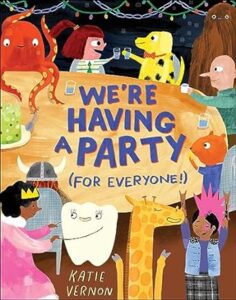 MM: I’m excited about ALL of them, but I’ll pick four coming out in 2024 that have been especially delightful to work on: a joyful celebration of great Black leaders called Hair Like Obama’s, Hands Like LeBron’s written by Carole Boston Weatherford and illustrated by Savanna Durr; a very funny approach to social etiquette and making guests feel welcome called We’re Having a Party (for Everyone!), written and illustrated by Katie Vernon; an empowering story about a girl performing for the first time in her mother’s mariachi band called Mamiachi and Me written by mother-son duo Jolene and Dakota Gutiérrez and illustrated by Mirelle Ortega; and a dreamy alphabet book about mindfulness called ABCs for a Peaceful Me written by Shelly Becker and illustrated by Dan Yaccarino.
MM: I’m excited about ALL of them, but I’ll pick four coming out in 2024 that have been especially delightful to work on: a joyful celebration of great Black leaders called Hair Like Obama’s, Hands Like LeBron’s written by Carole Boston Weatherford and illustrated by Savanna Durr; a very funny approach to social etiquette and making guests feel welcome called We’re Having a Party (for Everyone!), written and illustrated by Katie Vernon; an empowering story about a girl performing for the first time in her mother’s mariachi band called Mamiachi and Me written by mother-son duo Jolene and Dakota Gutiérrez and illustrated by Mirelle Ortega; and a dreamy alphabet book about mindfulness called ABCs for a Peaceful Me written by Shelly Becker and illustrated by Dan Yaccarino.
RVC: Hold onto your apples, folks, because it’s now time for the EXTENDED SPEED ROUND with double the fun as normal. WOWZA! Here come a whole bunch of blasty-fasty questions followed by an equal number of zippy-zappy answers. Are you ready, Meredith?
MM: Lay ’em on me!
RVC: Funniest word in the English language?
MM: Flibbertigibbet!
RVC: If animals could talk, which would be the most annoying?
MM: Squirrels.
RVC: Go‑to song for the car when you’re driving by yourself?
MM: Whatever’s playing on XM Radio’s Broadway station. This morning: “Consider Yourself” from Oliver!
RVC: Favorite time of day?
MM: 5:30am when the birds start chirping.
RVC: Favorite summer activity?
MM: Night swimming.
RVC: Favorite kind of tea?
MM: Harney & Sons Vanilla Comoro.
RVC: Favorite practical joke to play on houseguests?
MM: Life-size rubber alligator in the bathtub!
RVC: Books on your nightstand right now?
MM: The Sorrows of Others by Ada Zhang, Musical Tables by Billy Collins, and my “One Line a Day” 5‑year memory journal.
RVC: What’s a book that changed your perspective on picture books?
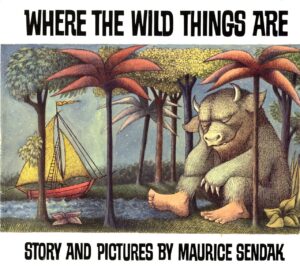 MM: Where the Wild Things Are, by Maurice Sendak. I took a college seminar on children’s books at Smith and we spent a VERY long time dissecting the design and text and character arc within that single 48-page book. Getting a guided tour of its inner workings gave me my first inkling that the picture book was an art form I wanted to dive into more deeply.
MM: Where the Wild Things Are, by Maurice Sendak. I took a college seminar on children’s books at Smith and we spent a VERY long time dissecting the design and text and character arc within that single 48-page book. Getting a guided tour of its inner workings gave me my first inkling that the picture book was an art form I wanted to dive into more deeply.
RVC: What’s the biggest risk you’ve taken in your career?
MM: Jumping from a house where I was editing books for readers of all ages to my current position in which I edit only books for 0–5 (with the occasional older outlier). It’s been a joy to focus deeply on one age group, but it definitely felt like a risky move at first.
RVC: Final question! What’s one word that best describes your editing style?
MM: Collaborative.
RVC: Thanks so much, Meredith!


Great interview, everyone!
I hear the joy and passion Meredith expresses for children’s books! It’s fabulous she held onto her dream job goal from childhood. Definitely one the top interviews.
Just caught myself humming…“It’s clear /we’re / going to get along!”
Great interview — questions and answers both!
Great questions and wonderful answers — thank you for this interview!